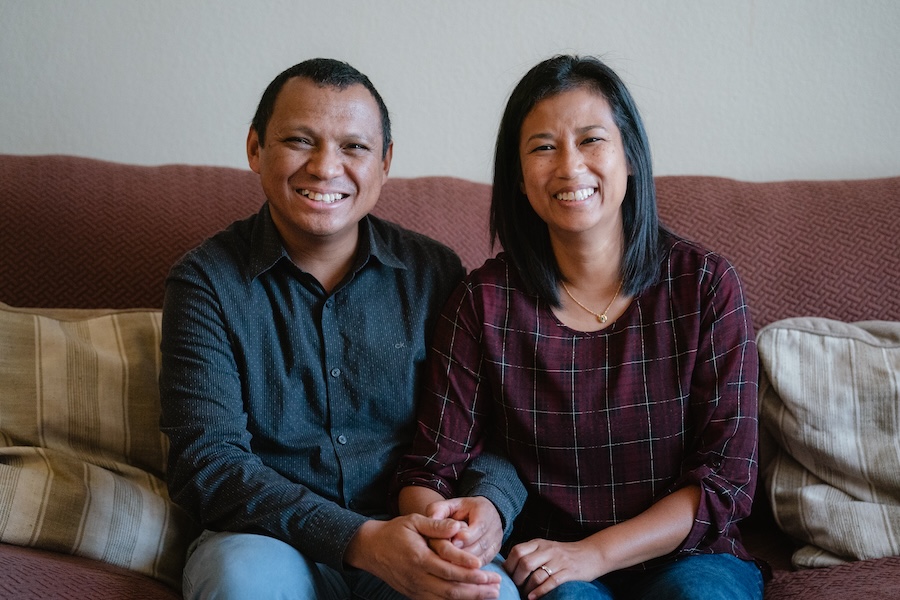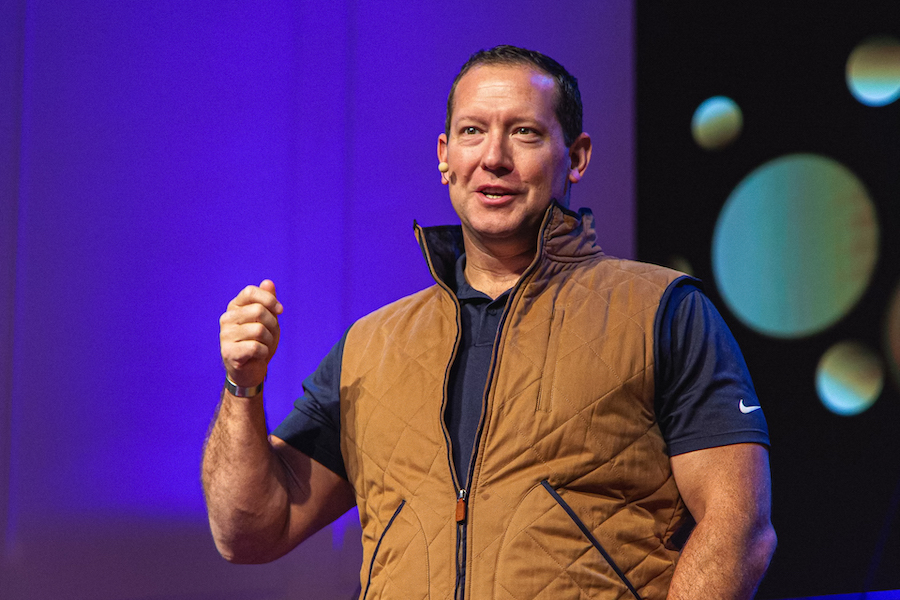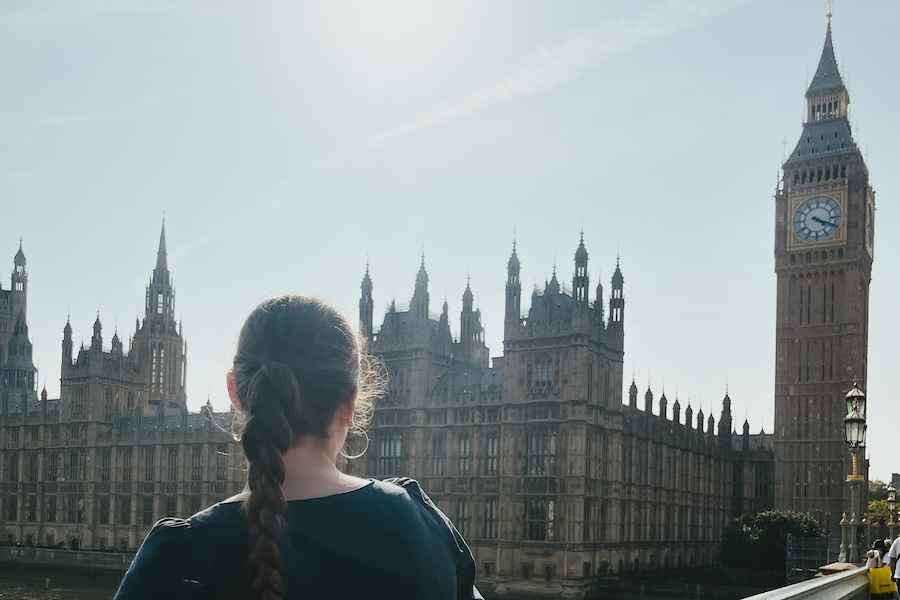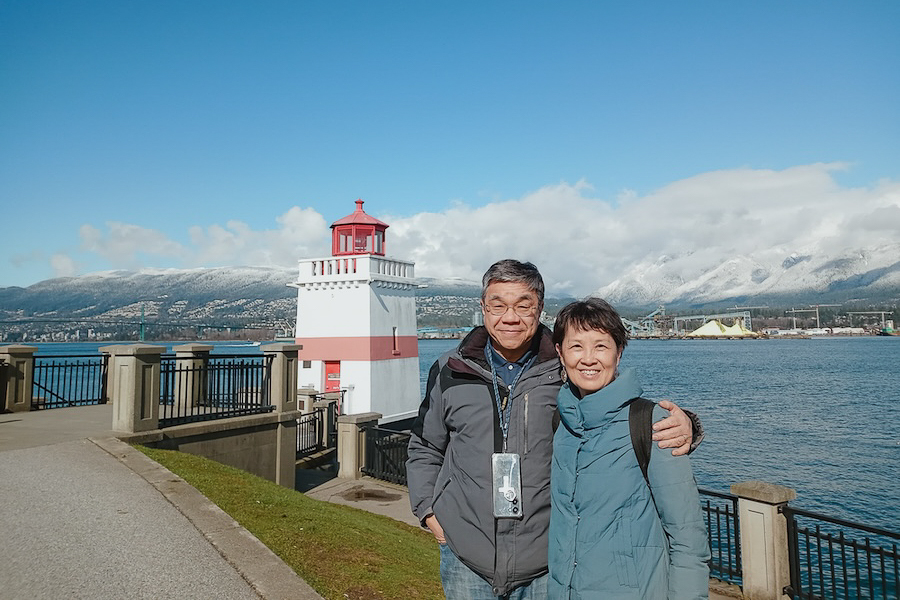Southwestern alumni share of hope, healing 25 years after Wedgwood Church shooting
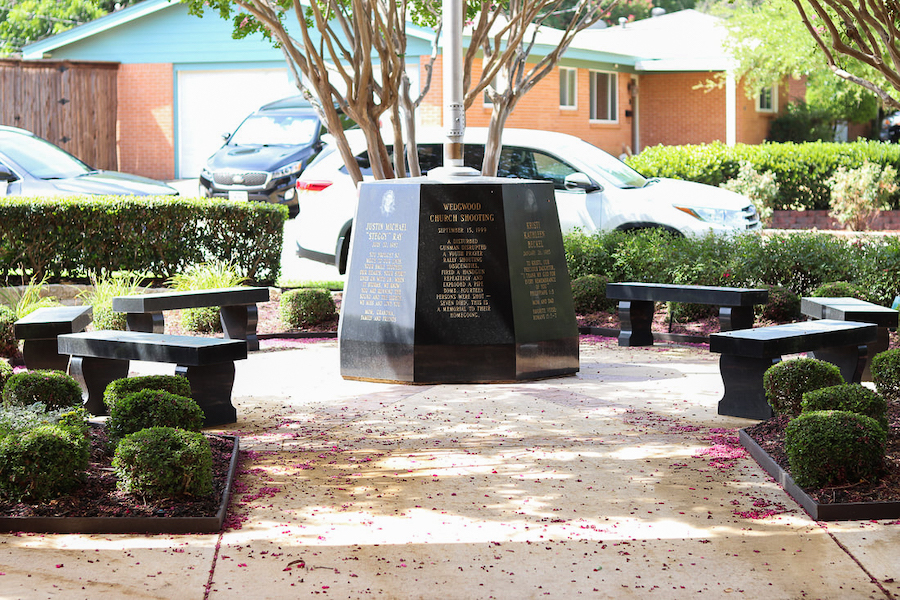
On Sept. 15, 1999, Southwestern Baptist Theological Seminary alumnus Jay Fannin (MACE, ’98) was helping at a youth event he had organized at Wedgwood Baptist Church in Fort Worth, where he had been named the youth minister 20 months previously. But that time of prayer and worship that was attended by 14 area church youth groups quickly turned into a tragedy when an armed man walked into the sanctuary and began shooting at the attendees.
The Wedgwood shooting, reportedly motivated by anti-Christian hate, became known as one of the deadliest shootings in Fort Worth at that time, occurring just five months after the shooting at Columbine High School in Colorado, as eight individuals were killed and seven others were injured. Some of those victims were teenagers attending the See You at the Pole prayer event and others were adult leaders or other members of the church, including Southwestern students and alumni.
Victims included alumna Sydney Browning (’91), 36; students Shawn Brown (MACE), 23, and Susan “Kim” Jones, 23, who was about to start her first semester; Kristi Beckel, 14, daughter of alumnus Robert Beckel (’93); and teens Cassandra Griffin, 14, Joseph Ennis, 14, and Justin Ray, 17. Alumni Jeff Laster (’00) and Kevin Galey (’88, ’04), staff counselor at Wedgwood, were also shot.
Chris Shirley, dean of the Jack D. Terry School of Educational Ministries, was on staff at Wedgwood overseeing the adult education and singles’ ministries. He recalls that Wednesday night when he suddenly heard screaming coming from outside of his teachers’ meeting.
“Things were happening all around church,” Shirley said of what started as a normal Wednesday night, remembering his 10- and 4-year-old children were in their normal classes and his wife was also on campus at the same time as the special youth event. “We started hearing noise and yelling and screaming. … And about the time we got up to figure out what was going on there, somebody came into the room where we were and told us what was happening and that we needed to get out.”
Jeff Laster, who at the time was preparing to graduate with a diploma in Christian education and served at Wedgwood as the facilities manager, was the first to encounter shooter Larry Ashbrook when he entered the church building. He approached him to welcome him to the church and asked him not to smoke in the building, his hand stretched out to shake hands with him, when Ashbrook pulled a weapon and shot Laster in the abdomen and the arm.
Even while Laster saw the shooter move past him and begin firing at others, he recalls thinking “‘I’ve been shot; I may die from this.’” But almost simultaneously, he said he felt a sudden warmth and peace and believes God told him, “‘You’re not gonna die.’”
After shooting others in that lobby area, including Browning, who Laster said was one of his best friends, Ashbrook then entered the sanctuary.
Fannin said he had been running the PowerPoint for the band that evening from the sound booth located in the balcony, as the regular teen A/V worker had not come that night. When he heard the popping from the gunfire, Fannin said his first thought was that he was going to need to confront a student pulling an ill-advised prank, as Columbine was still fresh in his memory. But when he reached the hallway outside of the sanctuary and smelled the smoke and saw blood, he realized this was a real event.
The next minutes were filled with confusion, as Fannin said the shooter continued shooting, students tried to run away, and rumors of a second shooter and a hostage situation spread. Fannin led a couple leaders, including Brown, toward an office with the goal of calling 911, while also sending someone to warn the nursery and other areas of the church.
Fannin said Brown would not enter the office but remained outside the door. Witness reports say Brown tried to speak with and stop the shooter, but within moments Fannin heard the shots that killed him.
When he made his way back to the sanctuary, Fannin said he was relieved that his wife was the first one who ran out of the sanctuary, her first words ones that Fannin believes God gave her: “‘Jay, this wasn’t your fault.’”
Entering the sanctuary less than a minute before the police did, Fannin finally saw the result of the event, saying he saw parents trying to remove their injured child, and students trying to carry a friend out who had been killed. He checked on other students who had also been killed.
Once finally outside the church building, gathering with the teenagers in a place that now has a memorial dedicated to the memory of the event, Fannin said the magnitude of what happened finally struck him.
“All the kids came up and just surrounded me,” Fannin said. “And kind of in that moment, everything just kind of hit. … We all went to the ground and some guy, to this day, I don’t know who he is, began praying over me.”
Rejuvenated by that moment of unity and prayer, Fannin turned his focus to helping those around him.
Tears still come to Shirley’s eyes, even 25 years later, when he remembers how he felt evacuating the building and going to an elementary school across the street, and the relief he felt when he found his wife and children. At that time, he also began to look for how he could serve the people around him.
“I was just kind of there for pastoral care during that period of time,” Shirley said of the rest of that evening. “… talking to people, helping people, you know, trying to relay messages and things to people, and just be whatever help I could.”
That same night, Shirley and others in his singles’ ministry would visit Laster, who was a member of the singles community, at the hospital. Laster would remain in the hospital a month, delaying his graduation until the next semester, and said his doctors would later tell him they were surprised he survived.
Kenneth S. Hemphill, Southwestern president at the time of the shooting, came to the church that same night also to provide support. Shirley said Hemphill’s goal was to let Wedgwood know that he and Southwestern were there to provide any support and help needed.
“Distraught parents searched for their children,” Hemphill wrote in an article he penned for a special edition of the Southwestern News printed not long after the shooting. “I stumbled through the scene as if watching from a distance. Soon, I would learn how deeply Southwestern had been affected.”
Southwestern provided support during the healing process, hosting the funeral for alumna Browning, holding a chapel service to pray for those impacted, and providing counseling to Wedgwood staff and members.
In weeks following the shooting, Dan Crawford, who was a member of Wedgwood and Southwestern faculty at the time and is today the senior professor emeritus of evangelism and missions, was commissioned by the church to write the story of what had happened. Crawford interviewed about 100 people who witnessed or were directly impacted by the shooting and used those interviews to write the book “Night of Tragedy, Dawning of Light.” By the 20th anniversary of the shooting, he wrote a follow-up book, titled “The Light Shines on,” which shared the story of the healing that followed as told by 46 people he interviewed, saying it was “their testimony of God’s grace over the 20 years since the shooting.”
The impact of the event continues for each of those involved, though in a variety of ways.
“I still can remember that the biggest lesson I learned through it was the influence of the body of Christ, the realness of the body of Christ,” Shirley said, adding over the months and even years that followed, the unity of the church strengthened as they healed together.
The global church also united behind them as Wedgwood received messages of encouragement and prayers from people from every continent except Antarctica, the walls of their hallways soon covered with those messages and other gifts. One such gift, a poster with an angelic image and a Bible verse, is framed and hangs on the wall of Shirley’s office today.
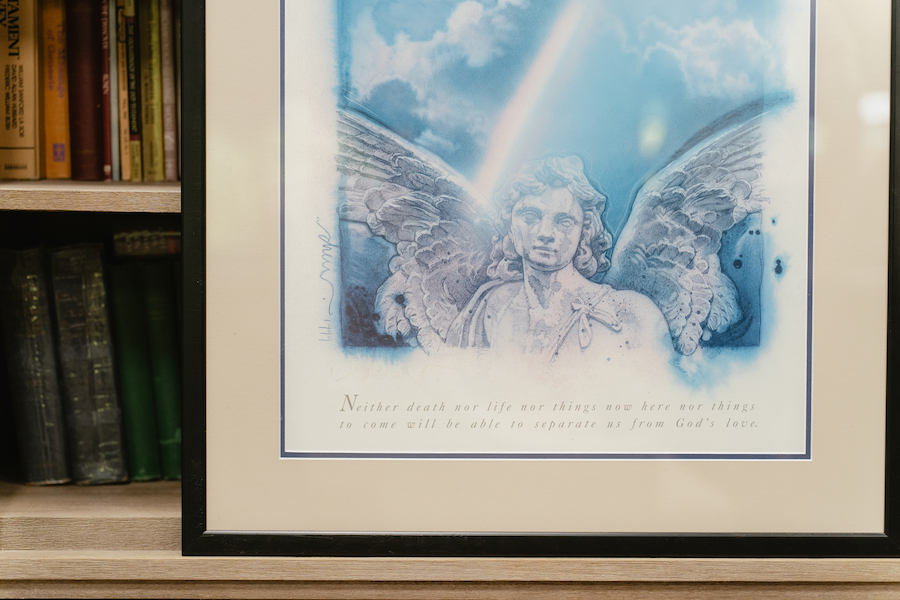
Chris Shirley, dean of the Jack D. Terry School of Educational Ministries, keeps a poster gifted to him after the shooting framed in his office.
Lester would go on to graduate from Southwestern and today continues to serve on staff at Wedgwood, now as the associate pastor for administration and missions.
“God brought me through it,” Laster said, though he adds the shooting still has a physical impact on his body. But while his role in that event has become a part of his testimony, Laster said that did not change the fact that God already had a calling for him, which had led him to quit a job and move to Fort Worth to attend seminary.
“People come up and say, ‘Well, God has a plan for you now.’ God had a plan for me before. God wasn’t waiting until I got shot to have a plan for me,” Laster said, adding this experience led him to further believe in God’s sovereignty over every circumstance.
Fannin, who ended up serving as youth minister at Wedgwood for 22 years and now serves as pastor at Shady Oaks Baptist Church in Hurst, also said this tragedy has created opportunities for him around the nation, as he speaks with police officers, churches, and radio and television stations. Just last week, he said he spoke with pastors and youth ministers in Georgia after a recent shooting at a school there to share with them a message of hope and healing.
“God is so good,” Fannin said. “… I look back at the shooting honestly with a lot more appreciation for who God is and how He gets us through things and … that he works all things for good, even though it doesn’t seem like that’s possible.”
Wedgwood Baptist Church will hold a time of remembrance Sunday, Sept. 15, on the 25th anniversary of the shooting.
